https://www.youtube.com/watch?v=qsaw3NUXCLA
How to setup and play three man chess
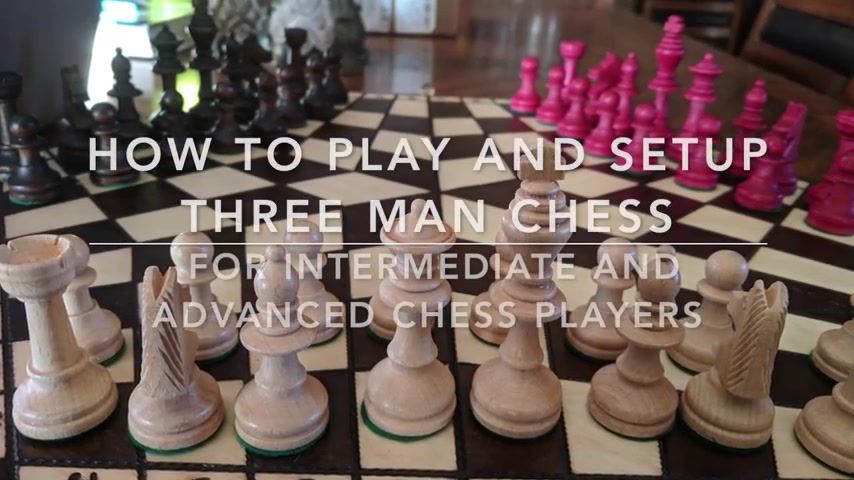
All right , let's go for the set of materials that we need here .
1st , 1st , you're gonna need a three man chess board like you see on the screen .
Now , there are many different three man chess boards .
There is a circle one and there's one that looks like mine , except some of the edges are cut off , which is kind of weird .
But for this video , I'm using this board looks kind of like a hexagon like a stop sign .
So this is the word I'm gonna use .
You can buy this online and with the chess pieces and everything .
So just be aware of that .
If you have any other board , the moves that I'm gonna show you are not gonna work .
Now , you're gonna need this board and you're also gonna need three sets of chess pieces , white , black and red .
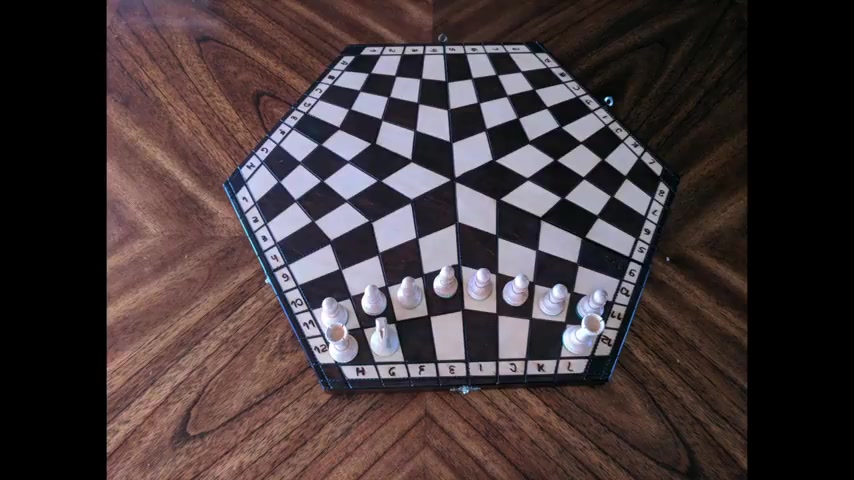
Now , once you have all this , you are ready to go .
All right .
Now , I'm gonna teach you how to set up this board .
So first we're gonna take all the pieces off .
Now , we have three sections on this board here in this section .
We have letters H through L over here we have a through H and over here we have A through L .
Now , these sections are , are gonna be the ones where we place each of the pieces .
So look for those letters on your board and once you find and locate those letters , now we're ready to set up and just like normal chess , we'll put the ponds in the front , rook's on the side .
Knights right next to the rook , then the bishop and then of course , the queen will go on its color and the king will go on the remaining space .
Now , you may be wanting to know what happens with the red piece .
Of course , there's no red square .
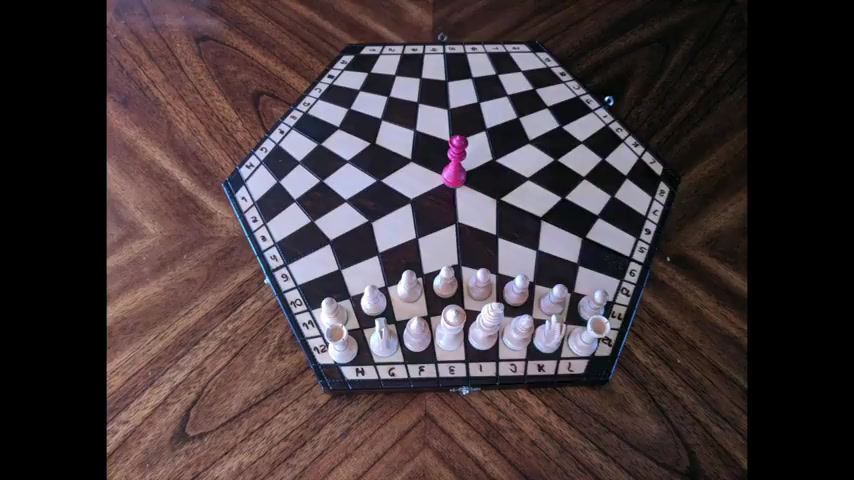
So the queen cannot go on its own color .
Well , in that case , the queen will just go on its left and the king will go on the right .
It's just that , that simple .
But for the black and white pieces , make sure the queen goes on its color .
Now , now that we have it set up , we're ready to begin to learn how each piece moves along this board .
Ok ?
Now , we have the pon the pond as you already know , our regular chest can move forward and attack diagonally .
Now , through my chest , this line is gonna look a little bit different because instead of going straight forward across the board , like in normal chest , it's gonna take this little cut up to the side of the board .
As you can see here , this little line right here connecting these two squares .
This is a straight line .
This is what's considered to be straightened through my chest .
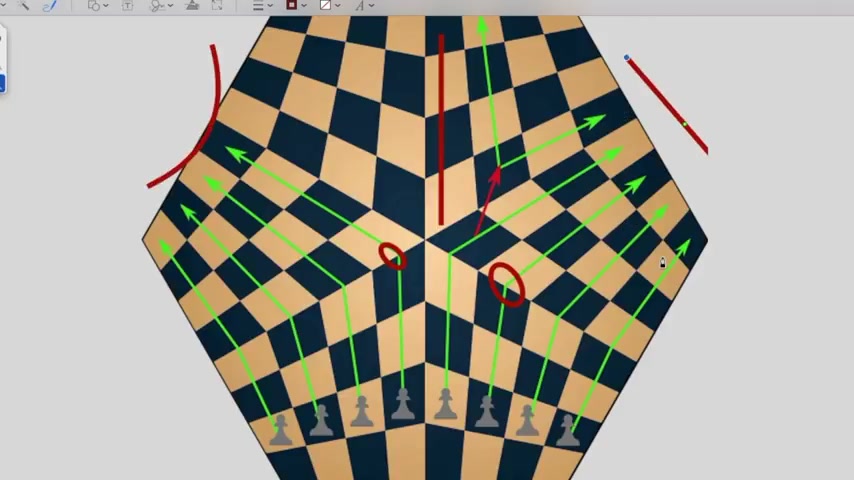
Seems gonna go on this side of the board except it's gonna go , it's gonna cut into the opposite direction and it doesn't matter which side of the board you're looking at this side of the board or this side of the board , it's gonna look the same .
Now , this red line might be a little bit confusing right now , but this red line just symbolizes the pod attacking .
We already know that it can attack diagonally .
And when it does , it'll continue on that path .
But when it crosses to the other side of the board , it has two valid ways , it can move , you can continue along the path this way or it can move straight up the board .
Ok .
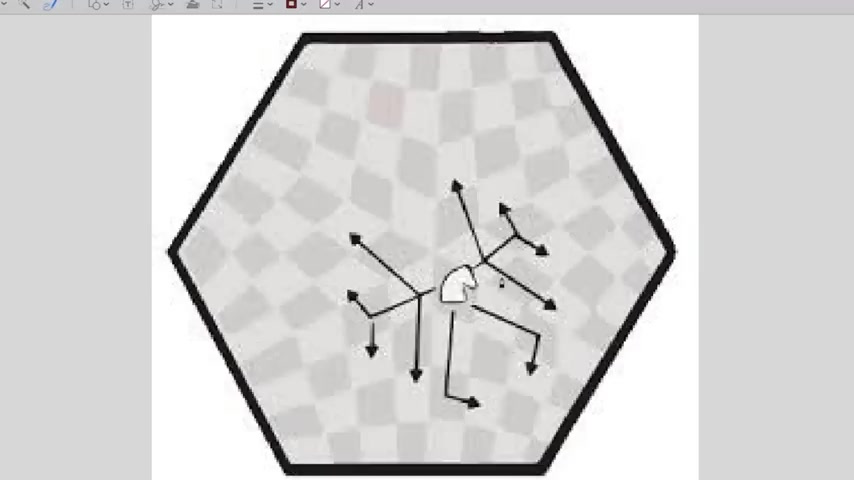
Now , we have the night , which is probably one of the most confusing pieces to know .
And through man chess , we already know that the night it can move , it can move two squares into the side or one square up and two to the side .
Now , this is what these lines are representing the arrow representing where it's gonna end up .
It's gonna go two up to the side to up to the side .
Of course , it can move here to , to up to the side to up to the side , the same over here to up to the side to up to the side to up to the side to , up to the side .
Now it gets a little bit confusing is when it's here in the center because of course , they can't move , they can't move in this direction and they can't move anywhere else .
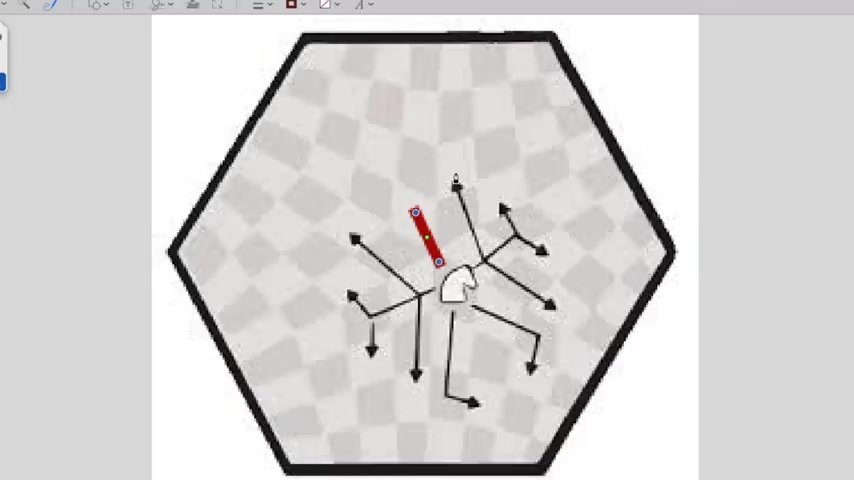
So if you , when you look at it , it's gonna move up one and go two to the side and this is a valid move to this square , same on this side , one up two to the side .
Now , if it was on the opposite , say right here , it would be , it'd be one up and then two to the side .
So it end up there and it was here and be it , it looks confusing and I'm getting a little bit confused by myself .
But again , looking at this , turning the board and actually looking at it in multiple perspectives for yourself might actually help you to really fully understand how this horse moves .
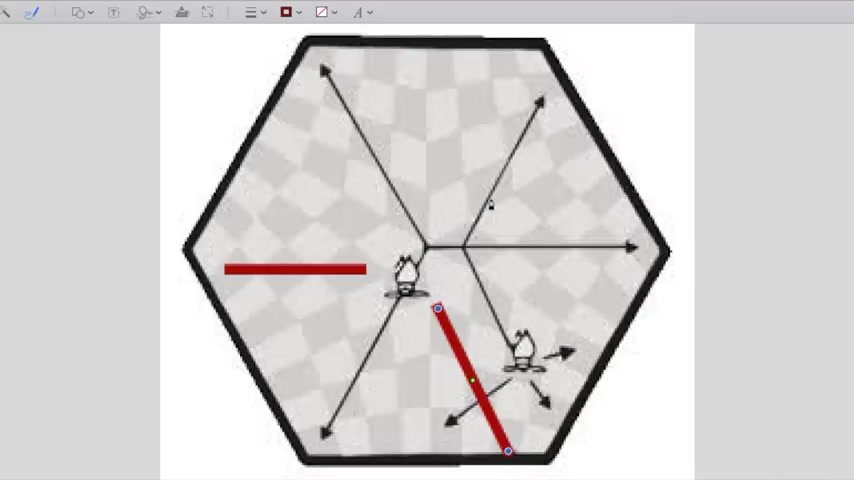
It seemed to be going kind of in the curve fine .
Now , when it gets here to the center , they can split into two opposite directions going across the board or up .
Oh , now we have the rook .
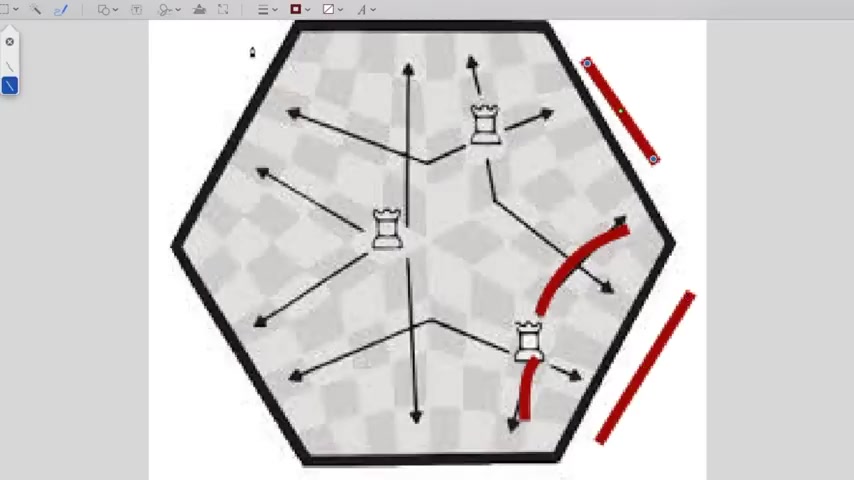
Now , the rook may look a little bit confusing , but when you think about it , it's really not to hear how this goes .
We already know what a straight line is from the pond and we know that a rook can move up and down the board and side to side .
No , this is your straight line as we already know from looking at the ponds .
And now this might be looking a little confusing the side to side movement it has .
But again , if you wanna look at it from a different perspective on the board , that's gonna be your straight line , that's the best way to look at this work .
If you wanna look at it from multiple perspectives on the board to see where that straight line exactly is .
And you can better grasp the concept of how this work is gonna move along the board .
This one is moving the same way as this one .
But this one looks just a little bit more confusing because if you were looking at it from this side of the board , again , we'll show you this on the board .
But now let's go to this r it's in the center .
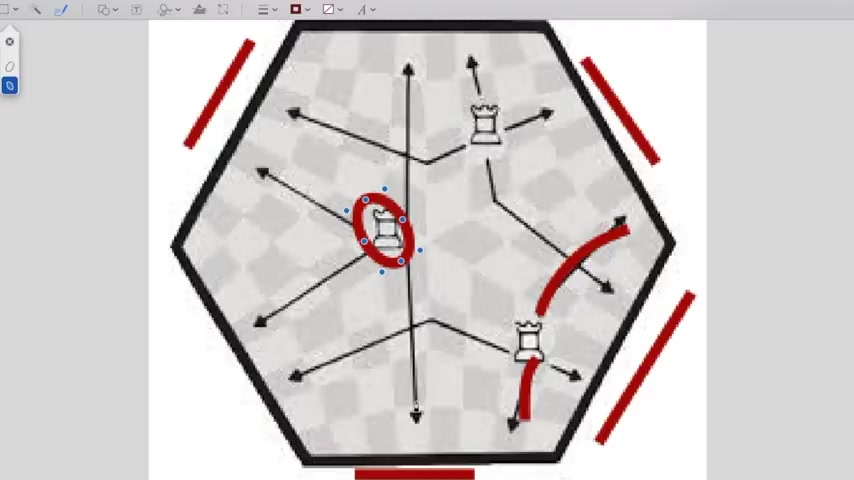
Now this work again can move along its line right here .
This one going down and then going up as a straight line .
Now it's side to side , movement will be coming down in this direction just like this one is both parallel .
So that's why it's a side , side direction .
And but since it cannot continue along down a path , since it's in the center , it can go straight up the board .
And again , it can move along these lines , it can move along these lines as much as it wants , as long as nothing is in the way .
Now , we have the queen and the queen .
If you know how the rook and the bishop move , you essentially already know how this queen is gonna move in regular chess .
It can move up and down along the board just like a rook and it can move that agony across the board like a bishop .
Same for through my chest .
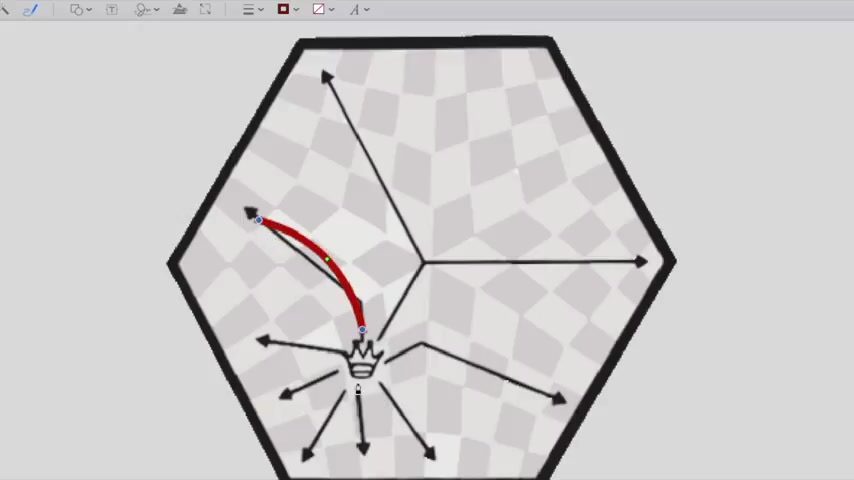
It can move along a straight line just like a rook as much as it wants , as long as nothing is in .
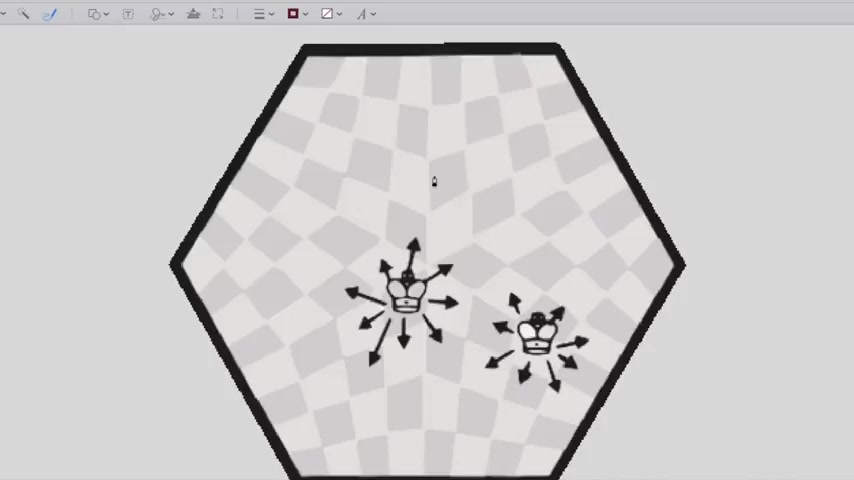
Ok .
Now we have the king , which again is one of the easiest as long as you know how the pond moves and knowing how the queen moves the kings move is going to move exactly like the queen except one space at a time .
And we already know that from regular chests .
And again , exactly like the queen , it's gonna be moving to these two spaces when it is in the center just like a bishop , except it's only gonna move one square .
Yeah , that's basically it .
The rest of you already know it's gonna move along that straight line and it's gonna be able move side to side along that straight line and he's gonna be able to move diagonally .
Other than that king is relatively simple .
Just think of the queen .
And for the queen , you can always think of the rook and the bishop .
Once you've mastered the rook and the bishop , you basically know how the king and the queen is gonna move .
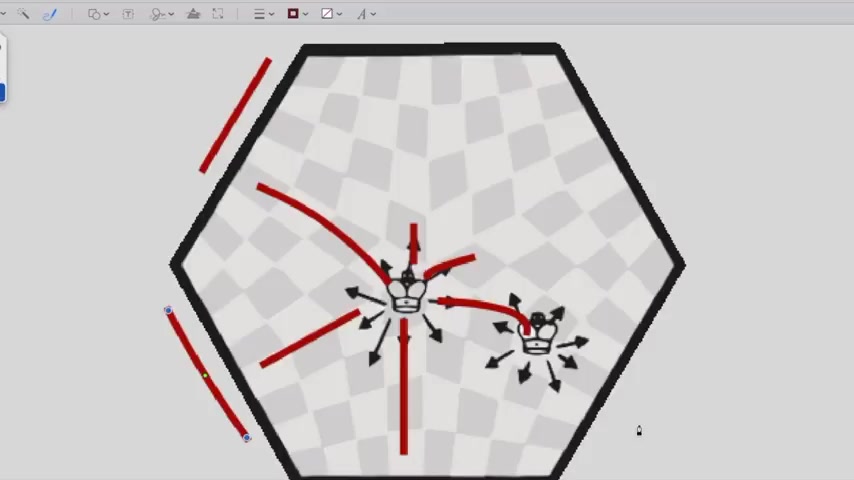
And again , just like I've said in every other one , looking at it from multiple perspectives , helps get a good sense of where you're moving the king .
All right .
Now that you know how each piece moves and you know how to set up the ball .
You are ready to play through , re grab two friends , you're ready to play first person to get a check mate .
Wins .
Have fun and remember , practice makes perfect .
Are you looking for a way to reach a wider audience and get more views on your videos?
Our innovative video to text transcribing service can help you do just that.
We provide accurate transcriptions of your videos along with visual content that will help you attract new viewers and keep them engaged. Plus, our data analytics and ad campaign tools can help you monetize your content and maximize your revenue.
Let's partner up and take your video content to the next level!
Contact us today to learn more.